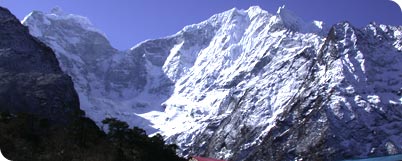
The Everest Panorama trek offers excellent views of Mt. Everest (8,848m/29029ft) and the main peaks of the Khumbu Himalayan Range, without going to extreme altitudes. Starting with a flight to Lukla (2,805m/9,200ft), you will make your way up to Namche Bazaar, the main town of the area and the Sherpa “capital”. After a day of acclimatization, you will explore the traditional Sherpa villages of Kunde and Khumjung, set amongst the incredible mountain scenery. From there you will trek to Tengboche, the site of Nepal's most sacred Buddhist monastery. The views from this ridge above the Dudh Kosi river is stunning as Everest looms over the Lhotse Ridge and Ama Dablem towering above the monastery. It continues to Pangboche, the trek's highest point, and then by way of a path seldom visited, Phortse, you will swing back to Namche and Lukla to end the trek with a flight back to Kathmandu. This trek offers incredible mountain views, culture, nature, hospitality and surprises all packed into 10 eventful days. The trek is combined with two days in the Chitwan wildlife reserve. This particular reserve is known for one-horned rhino, bengel tiger, sloth bear, wild boar, barking deer and over 300 species of birds.

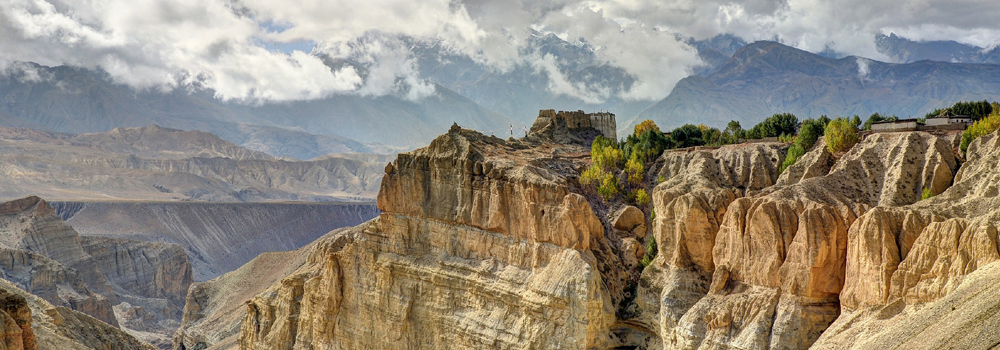
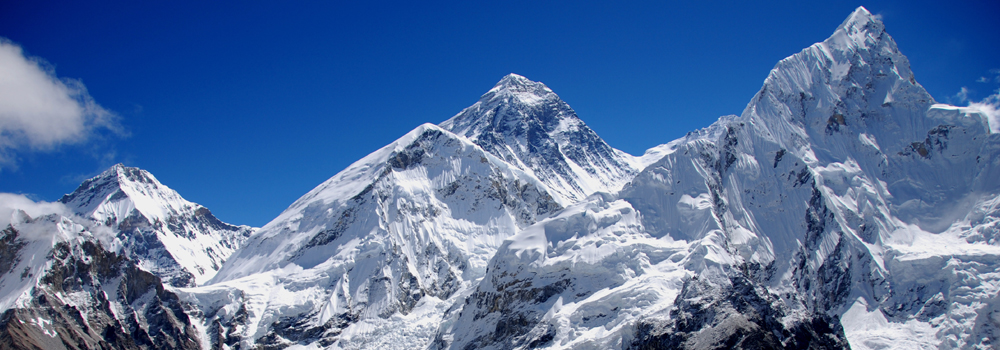
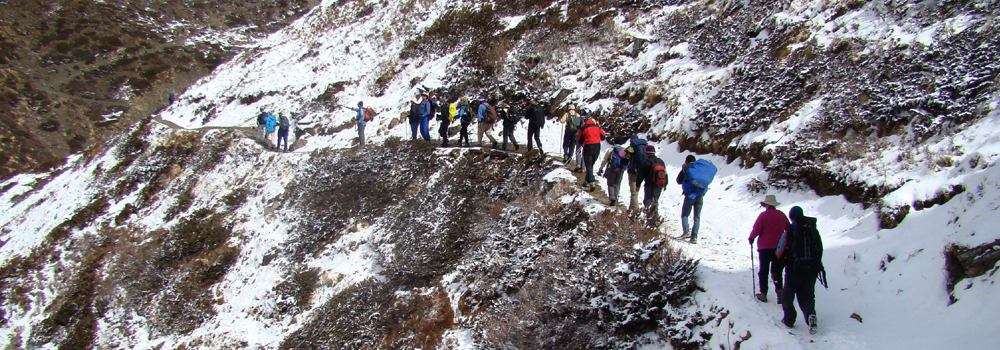
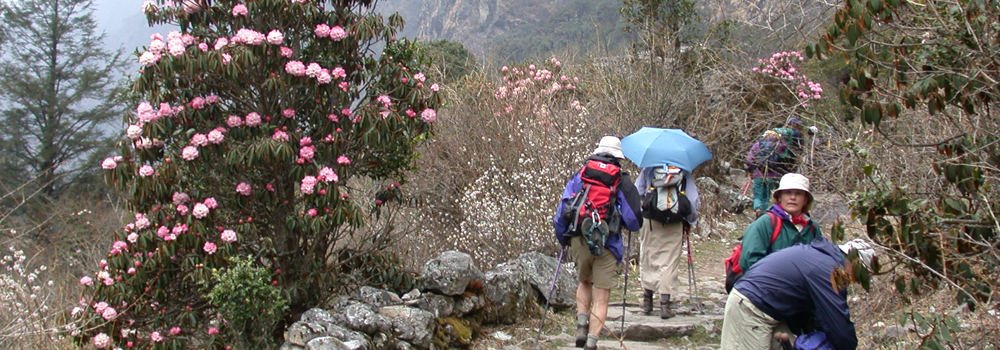
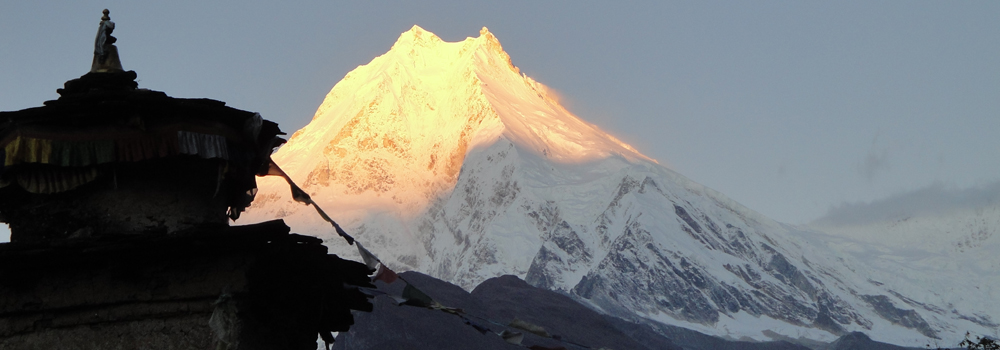
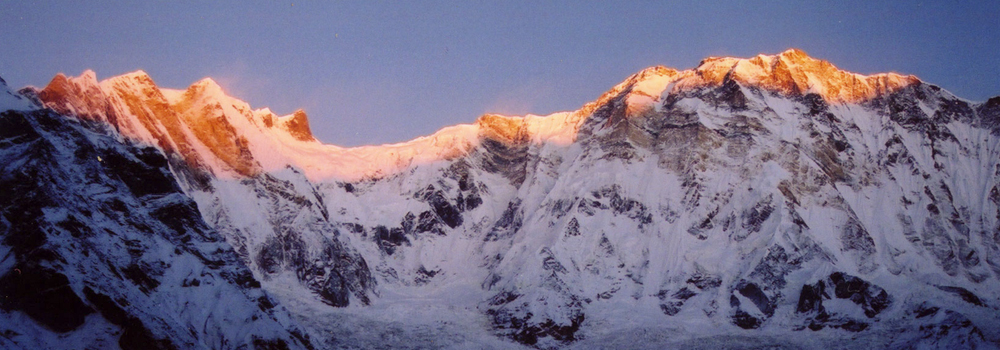
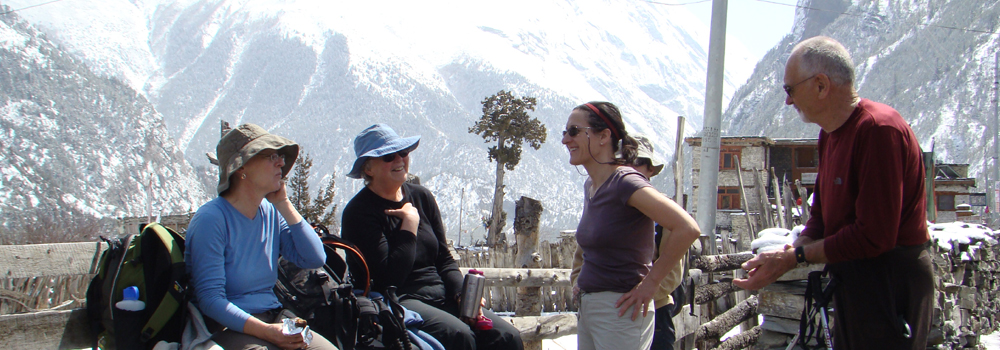

 The Everest Trekking / Trekking in Everest region or Khumbu Himalaya range is the most popular trekking area in Nepal. It would probably be the most popular destination, but it is more difficult to get to Solu Khumbu than to the Annapurna area. To get near Everest, you must either walk for 10 days or fly to Lukla, a remote mountain airstrip where flights are notoriously unreliable. Solu Khumbu is justifiably famous, not only for its proximity to the world's highest mountain (8848 m.), but also for its Sherpa villages and monasteries. The primary goal of an Everest trek is the Everest base camp at an elevation of about 5340 meters. But you cannot see Everest from the base camp, so most trekkers climb Kala Pattar, an unassuming 5545-meter bump on the southern flank of Pumori (7145 m.). Other than the problem of access, the other major complication to an
The Everest Trekking / Trekking in Everest region or Khumbu Himalaya range is the most popular trekking area in Nepal. It would probably be the most popular destination, but it is more difficult to get to Solu Khumbu than to the Annapurna area. To get near Everest, you must either walk for 10 days or fly to Lukla, a remote mountain airstrip where flights are notoriously unreliable. Solu Khumbu is justifiably famous, not only for its proximity to the world's highest mountain (8848 m.), but also for its Sherpa villages and monasteries. The primary goal of an Everest trek is the Everest base camp at an elevation of about 5340 meters. But you cannot see Everest from the base camp, so most trekkers climb Kala Pattar, an unassuming 5545-meter bump on the southern flank of Pumori (7145 m.). Other than the problem of access, the other major complication to an  The Khumbu circuit trek of Solukhumbu has everything including the incredible mountain views from Chukung, Kala Pattar and Gokyo Ri. Commonly known as “The Supreme Trek”, it encompasses all that the Khumbu has to offer, including fascinating villages, Tibetan Buddhist monasteries and the culture of the Sherpa people, who will surely win your hearts. After beginning with a flight to Lukla (2,805m/9,200ft), you will trek up to Kala Pattar viewpoint (5,545m/18,200ft) and then swerve off the main trail to traverse the Cho La pass (5,420m/17,782ft) into the Gokyo Valley. To top off this unique trek, we climb Gokyo Ri (5,488m/18,005ft) for a panoramic view of the great mountain view of five of the world's 8,000m+/26,000ft+ giants and a myriad of other peaks of the Khumbu Himalayan Range.
The Khumbu circuit trek of Solukhumbu has everything including the incredible mountain views from Chukung, Kala Pattar and Gokyo Ri. Commonly known as “The Supreme Trek”, it encompasses all that the Khumbu has to offer, including fascinating villages, Tibetan Buddhist monasteries and the culture of the Sherpa people, who will surely win your hearts. After beginning with a flight to Lukla (2,805m/9,200ft), you will trek up to Kala Pattar viewpoint (5,545m/18,200ft) and then swerve off the main trail to traverse the Cho La pass (5,420m/17,782ft) into the Gokyo Valley. To top off this unique trek, we climb Gokyo Ri (5,488m/18,005ft) for a panoramic view of the great mountain view of five of the world's 8,000m+/26,000ft+ giants and a myriad of other peaks of the Khumbu Himalayan Range.
 The Everest Panorama trek offers excellent views of Mt. Everest (8,848m/29029ft) and the main peaks of the Khumbu Himalayan Range, without going to extreme altitudes. Starting with a flight to Lukla (2,805m/9,200ft), you will make your way up to Namche Bazaar, the main town of the area and the Sherpa “capital”. After a day of acclimatization, you will explore the traditional Sherpa villages of Kunde and Khumjung, set amongst the incredible mountain scenery. From there you will trek to Tengboche, the site of Nepal's most sacred Buddhist monastery. The views from this ridge above the Dudh Kosi river is stunning as Everest looms over the Lhotse Ridge and Ama Dablem towering above the monastery. It continues to Pangboche, the trek's highest point, and then by way of a path seldom visited, Phortse, you will swing back to Namche and Lukla to end the trek with a flight back to Kathmandu. This trek offers incredible mountain views, culture, nature, hospitality and surprises all packed into 10 eventful days. The trek is combined with two days in the Chitwan wildlife reserve. This particular reserve is known for one-horned rhino, bengel tiger, sloth bear, wild boar, barking deer and over 300 species of birds.
The Everest Panorama trek offers excellent views of Mt. Everest (8,848m/29029ft) and the main peaks of the Khumbu Himalayan Range, without going to extreme altitudes. Starting with a flight to Lukla (2,805m/9,200ft), you will make your way up to Namche Bazaar, the main town of the area and the Sherpa “capital”. After a day of acclimatization, you will explore the traditional Sherpa villages of Kunde and Khumjung, set amongst the incredible mountain scenery. From there you will trek to Tengboche, the site of Nepal's most sacred Buddhist monastery. The views from this ridge above the Dudh Kosi river is stunning as Everest looms over the Lhotse Ridge and Ama Dablem towering above the monastery. It continues to Pangboche, the trek's highest point, and then by way of a path seldom visited, Phortse, you will swing back to Namche and Lukla to end the trek with a flight back to Kathmandu. This trek offers incredible mountain views, culture, nature, hospitality and surprises all packed into 10 eventful days. The trek is combined with two days in the Chitwan wildlife reserve. This particular reserve is known for one-horned rhino, bengel tiger, sloth bear, wild boar, barking deer and over 300 species of birds.
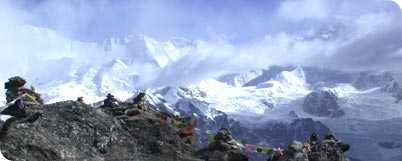 Gokyo Ri (or Gokyo Peak 5,357m/17,575ft) is situated atop the Khumbu region of the Nepali Himalayas. It is established on the west side of the Ngozumpa glacier, which is the biggest glacier in Nepal and is reputed to be the biggest in the entire Himalayan range. Gokyo (4,750m/15,583ft), at the base of Gokyo Ri, is a little hamlet of a couple of pebble dwellings and one of the highest settlements in the world. From Gokyo Ri, it is likely to glimpse four 8,000m plus peaks: Everest, Lhotse, Makalu, and Cho Oyu. The Gokyo lagoons are also an interesting stop in this locality. The route itself ends at Gokyo Ri and trekkers normally turn around and retrace their steps back to the trailhead. There is an alternate mountaineering route that starts beside the south tilt of Ngozumpa glacier and just south of Taujun lagoon. This alternate path directs east over the Cho La, an overtake at 5,420m/17,782ft, where it meets with the major Everest Base Camp trek. There is another higher summit just north of where the major Gokyo trek route finishes. It stands at an altitude of 5,483m/17,989ft.
Gokyo Ri (or Gokyo Peak 5,357m/17,575ft) is situated atop the Khumbu region of the Nepali Himalayas. It is established on the west side of the Ngozumpa glacier, which is the biggest glacier in Nepal and is reputed to be the biggest in the entire Himalayan range. Gokyo (4,750m/15,583ft), at the base of Gokyo Ri, is a little hamlet of a couple of pebble dwellings and one of the highest settlements in the world. From Gokyo Ri, it is likely to glimpse four 8,000m plus peaks: Everest, Lhotse, Makalu, and Cho Oyu. The Gokyo lagoons are also an interesting stop in this locality. The route itself ends at Gokyo Ri and trekkers normally turn around and retrace their steps back to the trailhead. There is an alternate mountaineering route that starts beside the south tilt of Ngozumpa glacier and just south of Taujun lagoon. This alternate path directs east over the Cho La, an overtake at 5,420m/17,782ft, where it meets with the major Everest Base Camp trek. There is another higher summit just north of where the major Gokyo trek route finishes. It stands at an altitude of 5,483m/17,989ft.
 Starting with a 6 hour (188km/118miles) drive to Jiri (2,100m/6,888ft) this trek follows the traditional route taken by the early Everest expeditions and still serves as main artery to the roadless Sagarmatha (Everest) region. Known as the Solu-Khumbu it is the home of the Sherpas. This relatively tiny society of 8,000 people is the best known and most admired of all Nepal's ethnic groups. According to their oral history Sherpas migrated to high valleys south of Mt. Everest from eastern Tibet about 450 years ago, hence the name Shar-pa, "peoples of the east." Many families along this route have converted their homes into trekkers' lodges catering to foreign hikers. Although a popular trekking route the Everest area is visited by only some 8,000 visitors each year - a fraction of the number that visits the Annapurna region. Trekking through the Sherpa villages we share many of their hearths and enjoy their generous hospitality. Trekking in from Jiri has the advantage of helping you to acclimatise en route. This trek is about 190km/120miles long and the total altitude gained on the inumerable uphill portions totals 9000m - much higer even than Mt. Everest! After Namche we follow the main trail to base camp (as per the Everest Base camp itinerary) with all its attraction. A legendary trek to a legendary destination.
Starting with a 6 hour (188km/118miles) drive to Jiri (2,100m/6,888ft) this trek follows the traditional route taken by the early Everest expeditions and still serves as main artery to the roadless Sagarmatha (Everest) region. Known as the Solu-Khumbu it is the home of the Sherpas. This relatively tiny society of 8,000 people is the best known and most admired of all Nepal's ethnic groups. According to their oral history Sherpas migrated to high valleys south of Mt. Everest from eastern Tibet about 450 years ago, hence the name Shar-pa, "peoples of the east." Many families along this route have converted their homes into trekkers' lodges catering to foreign hikers. Although a popular trekking route the Everest area is visited by only some 8,000 visitors each year - a fraction of the number that visits the Annapurna region. Trekking through the Sherpa villages we share many of their hearths and enjoy their generous hospitality. Trekking in from Jiri has the advantage of helping you to acclimatise en route. This trek is about 190km/120miles long and the total altitude gained on the inumerable uphill portions totals 9000m - much higer even than Mt. Everest! After Namche we follow the main trail to base camp (as per the Everest Base camp itinerary) with all its attraction. A legendary trek to a legendary destination.
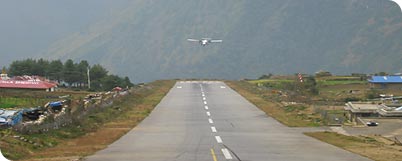 Everest base camp trekking boasts beautiful routes through Sherpa villages. The route follows the Dudh Kosi River before ascending up to Namche Bazaar, where the alpine view is stunning. The monastery at Tengboche is a photographer's paradise, set against the backdrop of Ama Dablam (6,856m/22,493ft) and Everest (8,848m/29,029ft). With time set aside for trekkers to acclimatize, our eventual goal is Everest base camp (5,340m/17,520ft) upon the Khumbu glacier. For a breathtaking view of Everest, there is also an opportunity to climb Kala Pattar at a height of 5,545m/18,192ft.
Everest base camp trekking boasts beautiful routes through Sherpa villages. The route follows the Dudh Kosi River before ascending up to Namche Bazaar, where the alpine view is stunning. The monastery at Tengboche is a photographer's paradise, set against the backdrop of Ama Dablam (6,856m/22,493ft) and Everest (8,848m/29,029ft). With time set aside for trekkers to acclimatize, our eventual goal is Everest base camp (5,340m/17,520ft) upon the Khumbu glacier. For a breathtaking view of Everest, there is also an opportunity to climb Kala Pattar at a height of 5,545m/18,192ft.
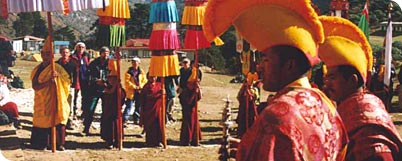 The most important festival in Tengboche is called the Mani Rimdu. It consists of a nine day meditation cycle and ends with a public blessing ceremony and the world renowned Mask Dances at Tengboche Monastery. This is the special festival combine trek offered by Peak Endeavour Nepal Trek. Those who are interested to combine his/her trek with some glimpse of festival of Nepal. This is just the perfect trek for them. We start our trek after 45 minute excellent
The most important festival in Tengboche is called the Mani Rimdu. It consists of a nine day meditation cycle and ends with a public blessing ceremony and the world renowned Mask Dances at Tengboche Monastery. This is the special festival combine trek offered by Peak Endeavour Nepal Trek. Those who are interested to combine his/her trek with some glimpse of festival of Nepal. This is just the perfect trek for them. We start our trek after 45 minute excellent
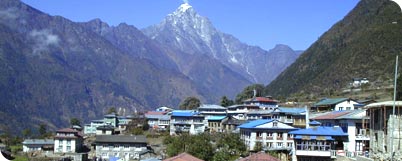 This spectacular trek will more than satisfy the ambitious trekker intent on crossing high passes without the commitment to any technical climbing. The trek offers an enduring experience of natural beauty, geological magnificence and profound cross-cultural discovery. The Sherpa residents of Khumbu, the great valley below Mount Everest, believe that all things - mountains, plants and animals are sacred.
This spectacular trek will more than satisfy the ambitious trekker intent on crossing high passes without the commitment to any technical climbing. The trek offers an enduring experience of natural beauty, geological magnificence and profound cross-cultural discovery. The Sherpa residents of Khumbu, the great valley below Mount Everest, believe that all things - mountains, plants and animals are sacred.
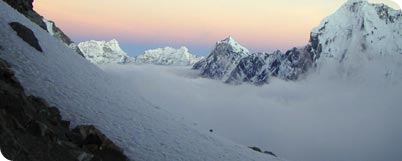 We begin our journey with a scenic drive on the Kathmandu-lasha highway to the ancient trading town of Dolka. Our walking through a scheduled and one of the most beautiful parts of Nepal starts here. We trek through the Rolwaling valley, celebrated as one of the seven hidden valleys in the Himalayan, past beautiful Sherpa and Tamang villages. Rolwaling is the East -West valley below Gauri Shanker (7145m) just south of Tibetan border. Beding and Na is the last Sherpa village of this valley, where more than 20 good Sherpa climbers, have conquered Mt. Everest and numerous other 8000m peaks.
We begin our journey with a scenic drive on the Kathmandu-lasha highway to the ancient trading town of Dolka. Our walking through a scheduled and one of the most beautiful parts of Nepal starts here. We trek through the Rolwaling valley, celebrated as one of the seven hidden valleys in the Himalayan, past beautiful Sherpa and Tamang villages. Rolwaling is the East -West valley below Gauri Shanker (7145m) just south of Tibetan border. Beding and Na is the last Sherpa village of this valley, where more than 20 good Sherpa climbers, have conquered Mt. Everest and numerous other 8000m peaks.





